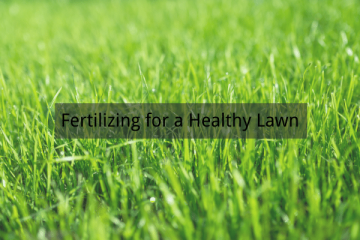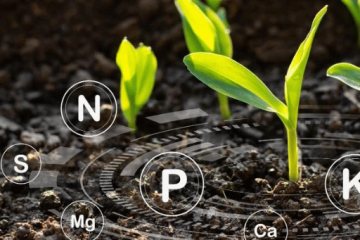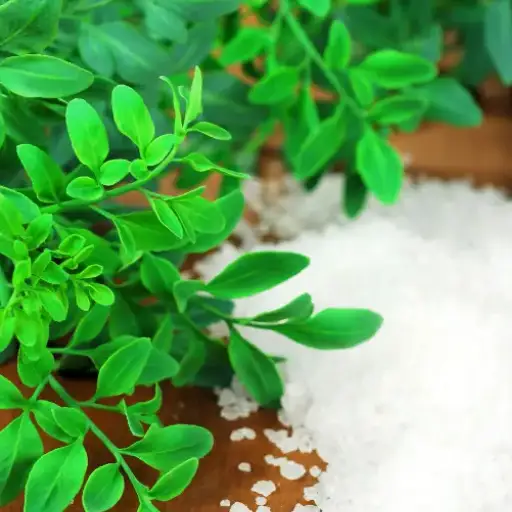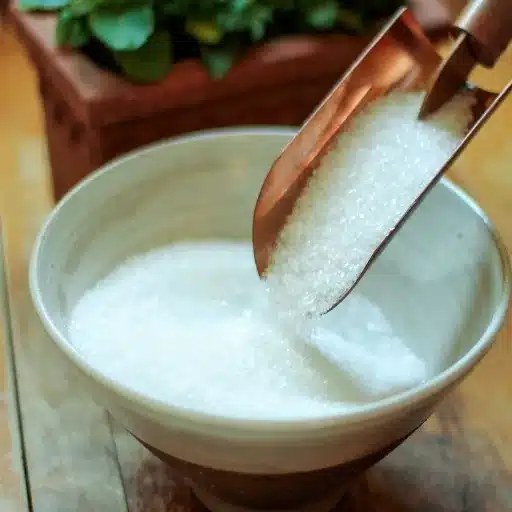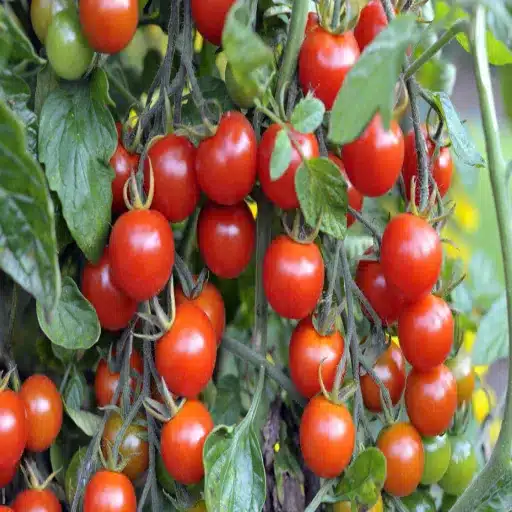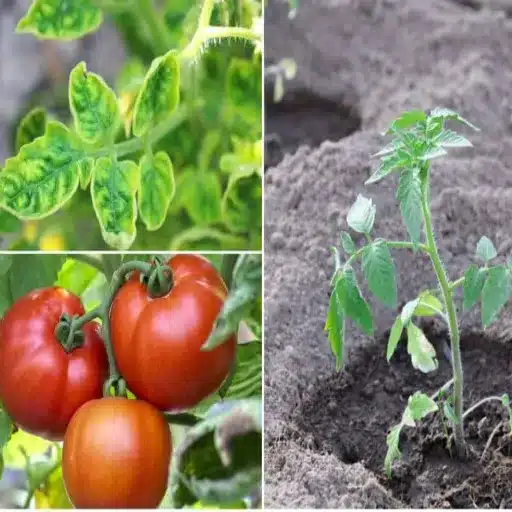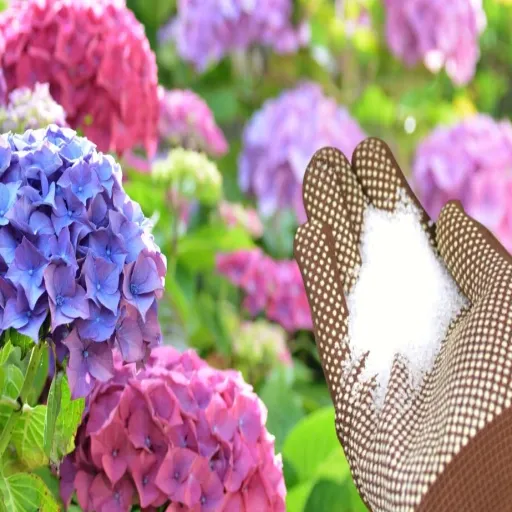Gardening enthusiasts are always on the lookout for natural solutions to enhance plant growth, and Epsom salt is a time-tested remedy with remarkable benefits. Composed of magnesium sulfate, Epsom salt plays a crucial role in improving soil conditions and providing essential nutrients for healthier plants. This article explores ten specific plants that flourish when watered with Epsom salt, offering a scientific perspective on how this common household item can unlock your garden’s full potential. By understanding the unique requirements of these plants and the proper methods of applying Epsom salt, you can achieve thriving greenery and vibrant blooms effortlessly.
Which plants benefit most from Epsom salt treatments?
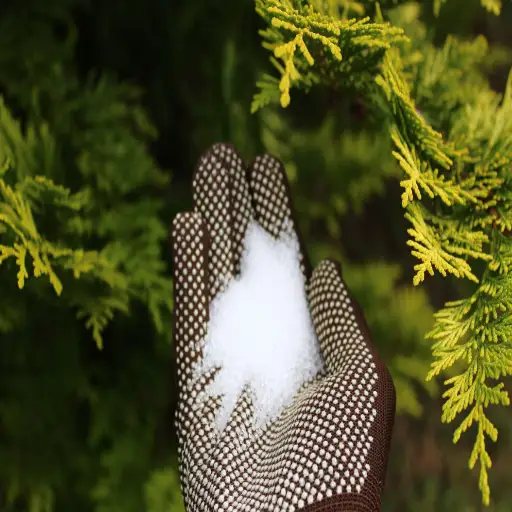
Roses: The classic Epsom salt lovers
Roses can be grown in a better manner when treated with Epsom salt owing to its magnesium sulfate, which is important for photosynthesis and helps in the formation of chlorophyll. The plants will then have more chlorophyll and thus, show deeper green leaves and blooms. If you are looking to achieve better results in your roses, consider the following instructions on applying Epsom salt:
- Dosage: Mix one tablespoon of Epsom salt and one gallon of water thoroughly before applying it directly to the soil around the roots of the plant. This can be done every 4_6 weeks during the growing season.
- Timing: For maximum absorption, do the treatment during early morning or late evening so there is less evaporation, while the soil can soak up all the nutrients.
- Method of Application: Epsom salt can also be used as a foliar spray. Mix one tablespoon in one gallon of water and spray onto the leaves. This permits swift absorption, especially in times of clear magnesium deficiency.
Scientific research endorses the concept of magnesium aiding in nutrient absorption, which implies roses treated with Epsom salt can have stronger growth and a better ability to handle stress. Never apply excessive amounts because too much, in the long run, overly magnesium nutrient balance will ruin the soil’s nutrients.
Tomatoes and peppers: Boosting vegetable garden yields
It has been found that using Epsom salt on tomatoes and peppers increases general plant health and their outcomes. The magnesium salt is critical for chlorophyll formation since it is essential for photosynthesis. In addition, magnesium helps capture useful nitrogen and phosphorus for these plants.
- Foliar Spray: Mix 1 tablespoon (15 ml) of Epsom salt in 1 gallon (3.8 liters) of water and spray onto the leaves of the plant every two weeks when in season. This is an effective method to allow the plant to absorb magnesium through the leaves.
- Soil Amendment: Every 4-6 weeks, one tablespoon (15 ml) of Epsom salt should be added to the soil for every plant. This should be done at the time of planting or as a side dress to increase magnesium levels in the root area.
- pH Range Consideration: Epsom salt is most effective in soil with a pH of 6.0 to 7.0, where magnesium is dissolves best.
- Precautions: Application should not be too excessive because over-saturation of magnesium disrupts the absorption of calcium and potassium and results in nutrient imbalance which affects growth.
When combined with normal horticultural practices of regular watering and exposure to sunlight, these conducts are expected to enhance flowering, and fruit growth, as well as resistance to physiological disorders like blossom-end rot. It is recommended that soil nutrients are constantly checked to ensure a healthy balanced growing environment is maintained.
Flowering plants that thrive with Epsom salt
Due to the magnesium content of Epsom salt which fosters chlorophyll synthesis and nutrient absorption, it is very effective for many flowering plants. Some of the plants that benefit from its use are roses, tomatoes, peppers, and azaleas.
- Roses: Magnesium deficiency, which is common in sandy soils, can be corrected by foliar and soil drenching with Epsom salts at a monthly rate of one tablespoon per gallon of water, allowing roses to achieve thick foliage and large flowers.
- Tomato and Peppers: During the flowering stage, these crops can be sprayed with Epsom salt solution (1 tablespoon of Epsom salt dissolved in a gallon of water) to help maximize magnesium absorption and prevent blossom end rot whilst improving fruit set.
- Azaleas and Rhododendrons: To promote greater flowering and reduce magnesium deficiency-induced leaf chlorosis in these acid-loving plants, Epsom salt can be used at the rate of one teaspoon per gallon of water every two weeks.
Excessive application can lead to a nutrient imbalance so exercise caution when Epsom salt is used on soil or plants.
How to properly use Epsom salt for plants?
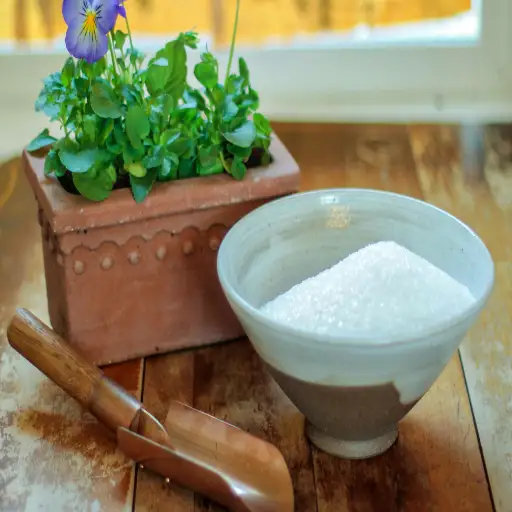
Correct dosage: Epsom salt per gallon of water
Epsom salt can be dissolved in water at a rate of one to two tablespoons per gallon, depending on the specific type of plant in question. This ratio, however, is intended for general use such as foliar application or soil drenching, and can be supplemented for specific plants like roses to help increase bloom development during the growing season. For magnesium-deficient crops like tomatoes and peppers, combining one tablespoon of Epsom salt with a gallon of water and applying it once a month should suffice. It is essential to mix the solution as it is prepared to guarantee even distribution.
- 1– 2 teaspoons per gallon: Recommended for supplementary plant maintenance without over-fertilization.
- Up to 1 tablespoon for roses during the blooming season: Encourages the development of flowers while addressing subdivision imbalances.
- Foliar and soil applications: Directs magnesium leaf intake with root uptake to activate the salt’s efficiency.
- Frequency (every 2 weeks or monthly): Limits the risk of over-application, which can lead to nutrient or soil imbalances.
Be advised to check the nutrient equilibrium before application to ensure no imbalance is caused.
Application methods: Foliar spray vs. soil drench
When choosing between soil drench and foliar spray methods, the selection is dependent on the specifics of the plant, the environment, and the scope of nutrient deficiency diagnosed.
- Magnesium Foliar Spray: This technique is optimal for remedying immediate nutrient deficiencies, whereby magnesium is taken up by the plant directly through the leaves, thereby avoiding possible soil availability problems. When magnesium is sprayed, it should be in the form of magnesium sulfate solution and maintained at a strength of between 1-2 percent say 10-20 grams per liter of water, and should be sprayed during the foliar application stages to ensure that it is entirely sprayed on the leaf surface. Spraying is done during critical growth periods like flowering and when rapid nutrient corrections are needed. The optimum period for spraying is very early in the morning or late in the afternoon to prevent evaporation and the burning of the leaf.
- The use of Magnesium Soil Drench: Soil drenching provides magnesium directly to the nutrient solution at the root zone and hence the sustained uptake of the nutrient is achieved. Soil drenching is typically practiced at a dilution ratio of 20-40 grams of magnesium sulfate per gallon of water. The solution is soaked in the soil around the base of the plant. This technique is particularly important when addressing long-term or systemic deficiencies, especially soils that test low in magnesium content. In such cases, the pH of the soils should also be regulated and should be between 6.0 and 6.5 because higher acidity as well as high alkalinity can reduce the availability of Magnesium.
By examining the current plant conditions and environmental factors, it is my suggestion that acute plant issues are best resolved using foliar spray while incorporating soil drench will aid in long-term plant health and prevention.
Can Epsom salt improve seed germination and seedling growth?
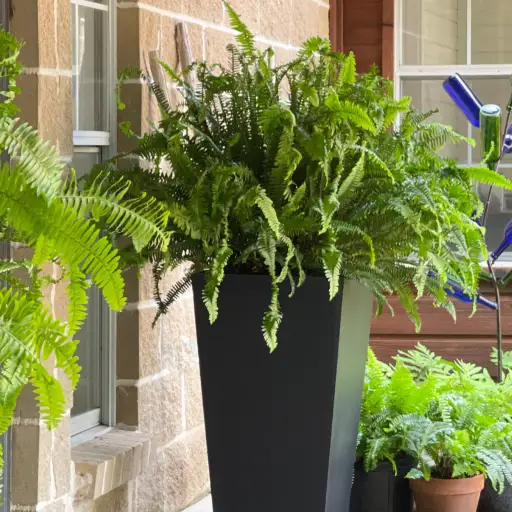
Using Epsom salt in seed-starting mixes
Epsom salt can certainly be useful for germinating seeds and with the growth of seedlings so long as they are blended well in the seed starting mix. As I recall, Epsom salt contains magnesium sulfate which is magnesium and sulfur combined, and both are vital micronutrients for ithe nitial growth of any planter. Magnesium assists in photosynthesis by promoting and building chlorophyll, and sulfur is a part of important amino acids and enzymes.
- Dilution Ratio: Generally, a solution of one tablespoon of Epsom salt dissolved in a gallon of water is enough. This concentration is effective because it gives reasonably enough nutrients while not being too much for seedlings.
- Application Timing: The solution can also be applied during the first watering after seeds have germinated, or in the form of foliar spray at one to two weeks after germination, when the seedlings start showing some signs of magnesium deficiency like pale colored leaves.
- Soil Conditions: Epsom salt is good for neutral or mildly acidic growing mediums but never use it in place of complete nutrient analysis. If the mix is already rich in magnesium or sulfur, overuse will cause salt accumulation and eventually nutrient deficiency.
The aggressive growth of seedlings and the maintenance of soil health can certainly be improved by Epsom salt when the limits specified in these guidelines are followed.
Epsom salt solutions for stronger seedlings
- Concentration for Watering: Epsom salt should be watered down to a concentration of 1 tablespoon of salt per 1 gallon of water. With such concentration, along with magnesium and salt, there is adequate absorption of chlorophyll along with salts, thereby aiding in nutrient intake.
- Foliar Spray Preparation: The mist used in place of direct foliar should contain water and salt. This watered-down solution contains 1 teaspoon of Epsom salt per gallon of water and should be used early in the morning or towards sunset as evaporation causes harm to crops in mid-day.
Following these guidelines ensures the right amount of magnesium is provided to seedlings, aiding growth while preventing imbalances or harmful buildup of nutrients in the growing medium.
Are there any risks or drawbacks to using Epsom salt in gardening?
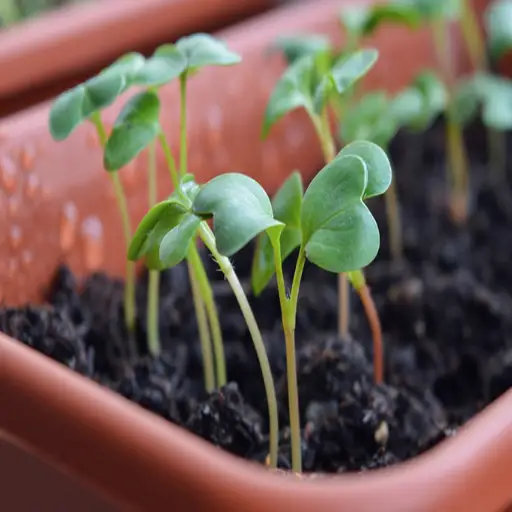
Potential over-application concerns
An excessive amount of Epsom salt makes gardening harder by decreasing the health of plants and soil. Magnesium sulfate, which is produced from the overuse of Epsom salts, can interfere with the nutrient balance of the soil. The competitive absorption can lead to an extreme deficiency of necessary nutrients like calcium and potassium. This imbalance may manifest as poor growth in the plants or reduced average yield per acre. Furthermore, the increased magnesium can cause further acidification of the soil, especially in sandy soils which can hurt the overall nutrient sufficiency of the plants.
- Optimal Concentration for Soil Application: 1 tablespoon of Epsom salt in one gallon of water, which is approximately 0.4% solution.
- Safe Foliar Spray Dosage: One teaspoon of salt to one gallon of water, which yields a 0.13% solution.
- Monitoring Soil Magnesium Levels: Magnesium values for soils need to be between 10%-20% of the base saturation exchange capacity.
Adopting the proper practices for soil application along with periodic soil analysis goes a long way in preventing Epsom salt build-up and ensuring plants receive the nutrients needed without adverse side effects.
Plants that may not benefit from Epsom salt
Certain plants are not likely to reap the benefits of Epsom salt, either because they are not growing in an environment with adequate magnesium levels, or because the level of magnesium they require is already low. For example, consider the following plants:
- Root Crops: An oversized amount of magnesium can restrict the absorption of vital nutrients such as potassium and phosphorus, both of which are necessary for root growth.
- Leguminous Plants: The plant is likely to source enough magnesium from the soil and requires little to no supplementation due to the presence of symbiotic organisms.
- Acid-Loving Plants: Magnesium sulfate should not be applied to soils that are too acidic, since these plants are sensitive to acid, further intensifying the problem.
It is essential to conduct regular soil tests and only apply magnesium sulfate (Epsom salt) when scientifically warranted to ensure the optimum health of the plants and avoid negative consequences.
Can houseplants benefit from Epsom salt treatments?
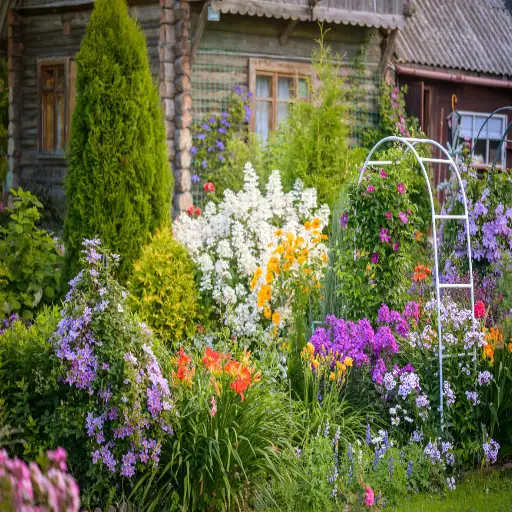
Indoor plants that respond well to Epsom salt
Epsom salts can indeed be effective on certain indoor plants, particularly where there is observable or plant test evidence for a magnesium or sulfur deficiency. These can include ferns, palms, and some flowering varieties such as roses or orchids.
- Deficiency Symptoms: Interveinal chlorosis or yellowing between veins, which is observed in older leaves often points to a lack of magnesium.
- Dissolution and application Rate: Weekly application should be sufficient but no more than one tablespoon of Epsom salt should be dissolved in a gallon of water. Also, be sure to apply as part of normal watering only, and not exceed this dosage, as there is a risk of salt buildup.
- Soil Acidity Range and Structure: Most nutrient Epsom salt is not appropriate for overly acidic or alkaline conditions unless PH moderation is utilized. For other conditions, it is suitable for well-drained silt and neutral soils ranging from PH 6 to 7.
- Calcium and Magnesium Ratio Sustaining: Calcium and magnesium should always be balanced to ensure a competition condition of nutrients is not created and balanced at the ideal ratio of Calcium and Magnesium at 3 to 5 parts Calcium and one Magnesium.
As a result of following these procedures and monitoring the well-being of the plants and the state of the soil, I am assured that my treatment is effective and safe for my houseplants. When using Epsom salt, it should be noted that it can only be applied upon confirmation of deficiencies as excessive Epsom salt use can shift the balance needed for optimal plant health.
Adjusting Epsom salt usage for potted plants
Utilizing Epsom salt in terms of dosage for potted plants should be contingent on the plant type and the plant’s limited environment. To start off, I check for magnesium deficiency indicators, which include yellowing of the leaves between the veins or any stunted growth patterns. If these symptoms are visible, I then prepare a solution that contains one teaspoon of Epsom salt for every gallon of water. This is then applied once every month during the growth season.
- Dosage: One teaspoon per gallon of water as, with potted plants, the environment is a closed one which has less soil volume. Therefore, the chances of nutrient leaching become minimal.
- pH Monitoring: The soil pH is routinely monitored to ensure the pH value does not exceed the limits of 6.0- 7.0 which is the pH range that magnesium can be absorbed.
- Drainage: The pot has to have efficient drainage holes to avoid salt buildup.
Once these guidelines have been put in place along with the plant monitoring strategies, I can effectively control all the magnesium levels for my potted plants with no fear of causing nutrient imbalances. I’ve emphasized adequate monitoring for effective treatment.
Reference sources
Frequently Asked Questions (FAQs)
Q: What is Epsom salt and how does it benefit plants?
A: Epsom salt, also known as magnesium sulfate, is a natural mineral compound that can be especially beneficial for plants. It provides essential nutrients like magnesium and sulfur, which promote healthy growth and can help prevent yellowing leaves. Many plants benefit from Epsom salt, as it can improve nutrient absorption and chlorophyll production.
Q: How do I use Epsom salt in the garden?
A: To use Epsom salt in the garden, you can either dissolve it in water or apply it directly to the soil. For a general application, dissolve two tablespoons of Epsom salt per gallon of water and use this solution to water your plants. Alternatively, you can sprinkle Epsom salt around the base of plants and water it in. For larger areas, use about 1 cup of Epsom salt per 100 square feet of garden soil.
Q: Which plants grow better with Epsom salt?
A: Several plants benefit from Epsom salt, including tomato plants, pepper plants, roses, and magnesium-loving vegetables like spinach and kale. Flowering plants such as begonias and azaleas also respond well to Epsom salt treatments. As a gardener, you’ll notice improved growth and vibrant foliage in these plants when using Epsom salt correctly.
Q: How much Epsom salt should I use on plants?
A: The amount of Epsom salt to use depends on the plant and application method. For most plants, use one tablespoon of Epsom salt per foot of plant height. When applying as a foliar spray, mix two tablespoons of Epsom salt per gallon of water. For tomato and pepper plants, use one tablespoon of Ultra Epsom salt per gallon of water and apply every two weeks.
Q: Can Epsom salt replace regular fertilizer?
A: While Epsom salt can be a valuable supplement, it should not completely replace regular fertilizer. Epsom salt provides magnesium and sulfur but lacks other essential nutrients that plants need, such as nitrogen, phosphorus, and potassium. Use Epsom salt in conjunction with a balanced fertilizer for optimal plant health and growth.
Q: How often should I apply Epsom salt to my plants?
A: The frequency of Epsom salt application depends on your plants’ needs and soil conditions. For most mature plants, applying Epsom salt once a month during the growing season is sufficient. For seedlings or plants showing signs of magnesium deficiency, you can apply it every two weeks. Always monitor your plants’ response and adjust accordingly.
Q: Are there any risks to using Epsom salt on plants?
A: While Epsom salt is generally safe for plants, overuse can lead to problems. Excessive magnesium can interfere with the uptake of other nutrients and potentially harm beneficial soil microorganisms. Always follow recommended dosages and avoid applying Epsom salt to plants that prefer acidic soil, as it can raise soil pH slightly. If you’re unsure, it’s best to conduct a soil test before adding Epsom salt to your garden.

